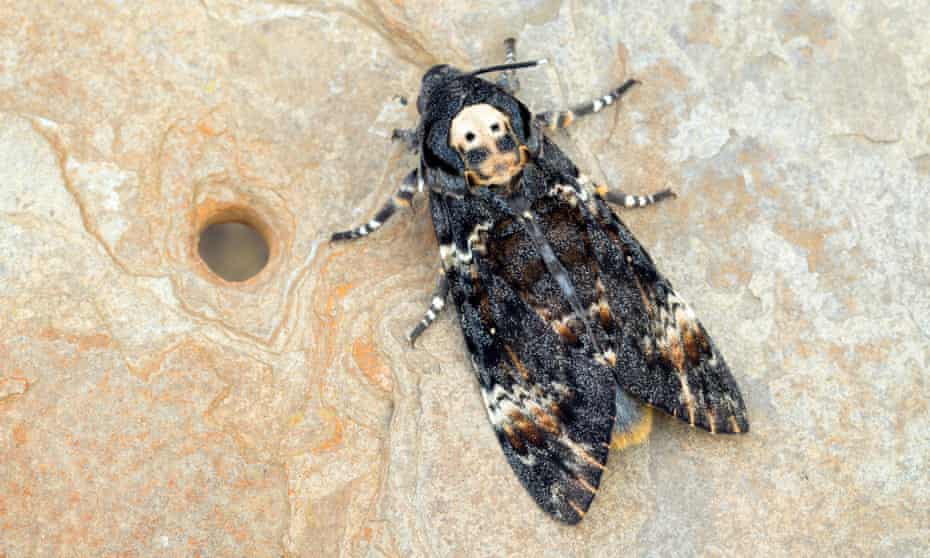How the death’s head hawkmoth transmits terror and confusion
It’s ‘skull’ repels birds, its squeaking genitalia baffle bats and it is covered in waxy particles better to raid honeybee nests

One recent 31 October, I jumped from my chair at a sinister squeaking by my bookshelf. I thought it was a mouse but it was the perfect harbinger of Halloween: a death’s head hawkmoth.
The largest moth to fly in Britain is a rare migrant but even in late autumn individuals can be swept across the Channel. “My” hawkmoth had pupated in a plant pot after my children and I reared some of its personable caterpillars.
The death’s head has evoked terror from ancient to recent times (it’s The Silence of the Lambs moth) because above its yellow-and-black striped body is a skull and crossbones pattern.
What we perceive is a world away from other creatures, as Philip Howse explains in Bee Tiger, an exhilarating new book about this amazing moth. Upside down, as seen by birds, the “skull” resembles a giant hornet’s head.
This is one of many deceptions. The squeaking bamboozles mice while ultrasonic sounds – emitted from its genitalia – baffle bats. The moth is even covered in waxy particles, which act as an invisibility cloak so it can raid honeybee nests with impunity.
As Howse reveals, this incredible insect is no outlier: all species communicate in languages that scientists continue to unravel, enlarging our perception and sense of wonder too.
